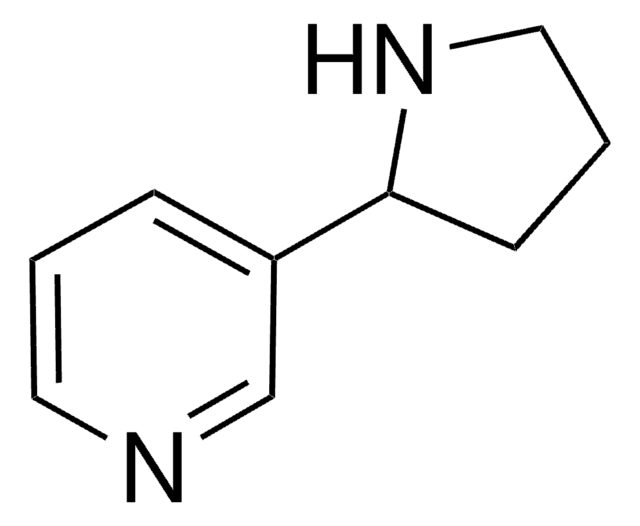B85927
terc-Butanol
TEBOL® 99, ≥99.3%
Sinônimo(s):
2-metil-2-propanol, Álcool terc-butílico, Trimetilcarbinol
About This Item
Produtos recomendados
densidade de vapor
2.5 (vs air)
Nível de qualidade
pressão de vapor
31 mmHg ( 20 °C)
44 mmHg ( 26 °C)
Ensaio
≥99.3%
forma
solid or liquid
temperatura de autoignição
896 °F
Lim. expl.
8 %
fabricante/nome comercial
TEBOL® 99
Impurezas
≤0.15% (water)
índice de refração
n20/D 1.387 (lit.)
pH
7 (20 °C)
pb
83 °C (lit.)
pf
23-26 °C (lit.)
densidade
0.775 g/mL at 25 °C (lit.)
cadeia de caracteres SMILES
CC(C)(C)O
InChI
1S/C4H10O/c1-4(2,3)5/h5H,1-3H3
chave InChI
DKGAVHZHDRPRBM-UHFFFAOYSA-N
Procurando produtos similares? Visita Guia de comparação de produtos
Categorias relacionadas
Descrição geral
Aplicação
- A cosolvent with water (tert-Butanol/Water binary system) in the production of poly-ε-caprolactone (PCL) nanoparticles.
- A solvent in the synthesis of ZnO nanoparticles (Zinc oxide nanoparticles) from zinc acetylacetonate hydrate.
Características e benefícios
Informações legais
Palavra indicadora
Danger
Frases de perigo
Declarações de precaução
Classificações de perigo
Acute Tox. 4 Inhalation - Eye Irrit. 2 - Flam. Liq. 2
Código de classe de armazenamento
3 - Flammable liquids
Classe de risco de água (WGK)
WGK 1
Ponto de fulgor (°F)
59.0 °F - closed cup
Ponto de fulgor (°C)
15 °C - closed cup
Certificados de análise (COA)
Busque Certificados de análise (COA) digitando o Número do Lote do produto. Os números de lote e remessa podem ser encontrados no rótulo de um produto após a palavra “Lot” ou “Batch”.
Já possui este produto?
Encontre a documentação dos produtos que você adquiriu recentemente na biblioteca de documentos.
Nossa equipe de cientistas tem experiência em todas as áreas de pesquisa, incluindo Life Sciences, ciência de materiais, síntese química, cromatografia, química analítica e muitas outras.
Entre em contato com a assistência técnica



